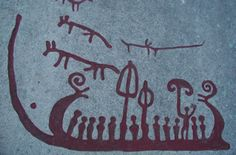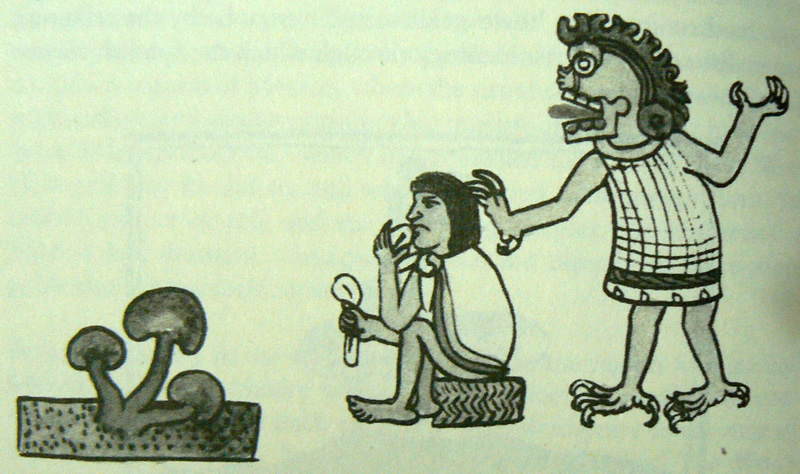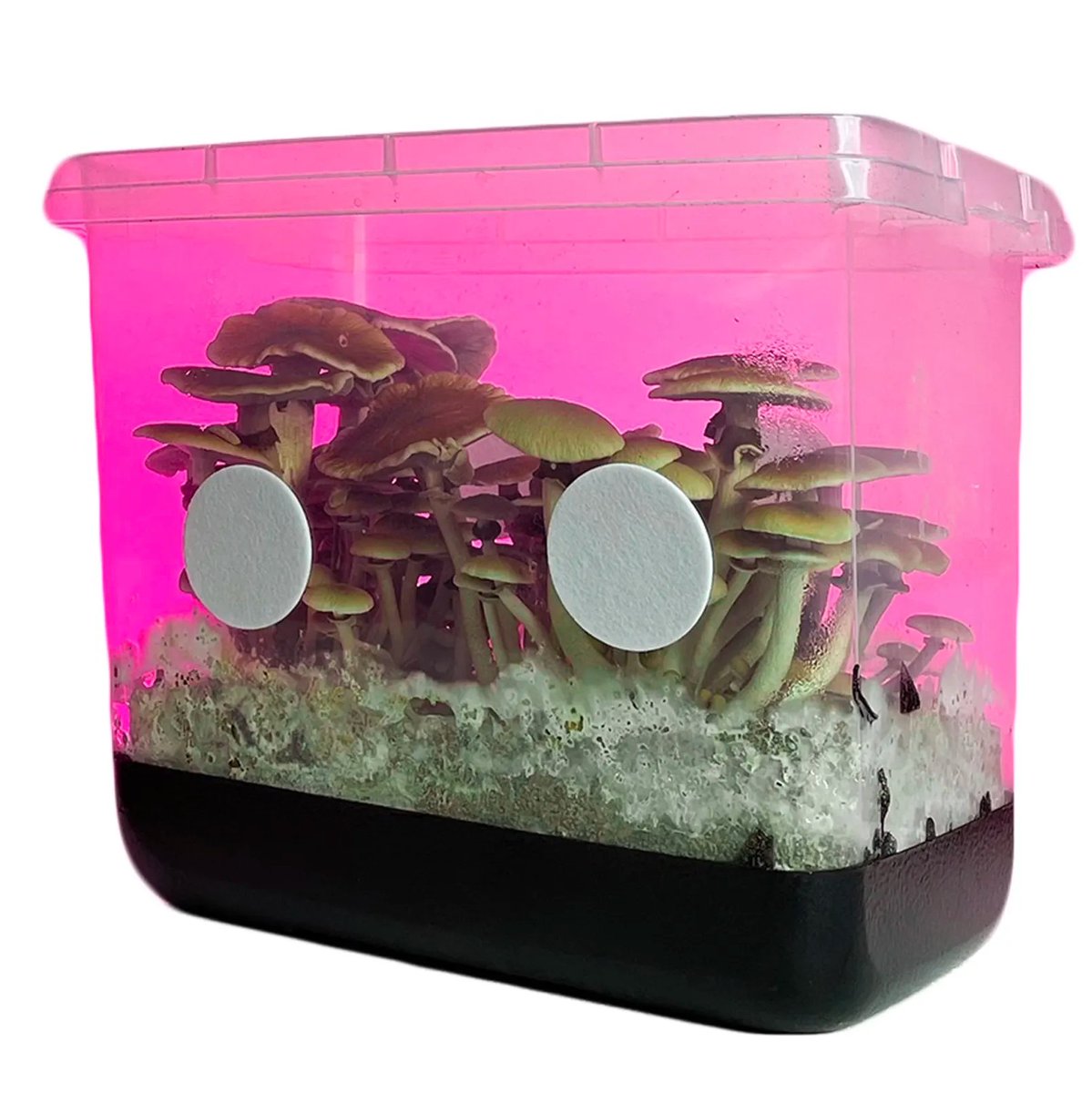Today is the Autumn equinox, the beginning of the “bad season” where growing things go to sleep in the Palearctic. All growing things except one kind, that is, mushrooms! Ever wondered what was up with those so-called “magic mushrooms”? Let’s see
Nearly all forms of life on the planet visible to the naked eye are Eukaryota, who separated from bacterial Prokaryota (& Archaeans) up to 2 billion years ago. Eukaryote cells are larger, more compartmentalized & more complex than those of bacteria
Among today’s most frequently encountered non-animal Eukaryota, Fungi stand out as a unique group through its lifestyle and properties which lead to a completely unparalleled ability for adaptation. This makes them seem mysterious and sometimes even dangerous
Whereas in plants or animals certain physical or biochemical traits can generally show a group is related, so they can be classified together in a phylogenetic tree, fungi are so polyvalent that completely unrelated groups convergently evolve similar traits again and again
So it should come as no surprise then, that the properties that make a mushroom “magic”, that is to say hallucinogenic, are actually widely distributed across different genuses and families of the fungal kingdom, resulting in many different potencies and uses
A fungi can be saprophytic (feeds off decaying organic matter, most typically dead wood or plants but sometimes animals and excrements), parasitic (feeds on live plants or organisms) or mycorrhizal (a mix of saprophytic & mutualistic where it gets food from a partner plant)
Many mushrooms are unfit for human consumption, either because of a bad taste, a small size, or more saliently the presence of toxins. There exist 4 broad categories of mushroom poisoning types, hallucinogenic ones being known as “central nervous system poisoning”
The symptoms of CNS poisoning, in mild cases, involve hallucinations both visual and aural and an altered mental state as well as physical symptoms including numbness, spasms or intoxication. These occur rapidly after ingestion and are usually transient
Only in severe cases of CNS poisoning from ingesting high doses of mushrooms can one suffer graver symptoms such as coma and death
Hallucinogenic mushrooms are divided into three categories. Those producing the molecules psilocybin & psylocin, those producing the compounds ibotenic acid & muscimol, and finally the Claviceps & Cordyceps genuses, producing ergot alkaloids.
The first category encompasses what are today’s recreative drug mushrooms including the Psilocybe genus but also members of other large genuses such as Pluteus, Panaeolus, Inocybe, Conocybe or Gymnopilus
The next two compounds bind powerfully to the brain’s glutamate receptors. Alcohol and many types of sedatives and anxiolytics also affect the GABA receptor, although in a different way. They affect the release of ions such as Ca+2 in neurons, causing numerous symptoms
As for the final class of hallucinogenic mushrooms, the most dangerous of them all, I already did a deep dive on them in a thread you can find here: x.com/General_JWJ/st

Lanius@General_JWJ
Mar 29 22
View on Twitter
This thread will be a continuation on the topic of plant galls. We’ve seen an example of an insect gall in the previous thread, and how it benefited mankind. We’ll now look at a fungus gall, whose contribution to our history was far less of a net positive!
Humans, being for most of their existence foragers subsisting off their environment, have probably always been aware of the properties of some mushrooms, and so their association with hallucinogenic species goes back to prehistory
One of the most striking and oldest depictions believed to be associated with these mushrooms is cave paintings in Tassili, in Algeria. They depict an otherworldly figure, possibly a shaman, covered in mushrooms and holding handfuls of them (3500 BC)
Similar depictions exist in Scandinavia from 3000 BC to 500 AD, in wall paintings and other mediums. It is very typical in those latitudes to see the famous mushroom Amanita muscaria, fly agaric, forming mycorrhizal partnerships with a wide variety of conifers and also birch
And indeed those practices continued in the area for at least a little while longer, as we’ve seen in my overview of the religious beliefs & practices of the Sami people of Northern Scandinavia x.com/General_JWJ/st

Lanius@General_JWJ
Aug 26 22
View on Twitter
The famous hallucinogenic mushroom fly agaric (Amanita muscaria) is also believed to have played a role in the trances and visions of the Noajdde, enhancing the senses and causing a sensation of lightness and flying
Fly agaric was also used elsewhere in the world, by the Ojibwe & Algonkin native tribes of North America, who called it miskwedo, while Ugrian and Siberian shamans in Eurasia were also known to use it to enter into a state of trance, similarly to the Sami
It’s even been theorized by some that the drink called “Soma”, used by the warriors of the ancient Aryan people of central Asia to grant them courage in battle, was derived from fly agaric.
Next up we cross the Atlantic to see that in their Pre-Classic period, the Mayans carved evocative “mushroom stones”, with mushroom headed characters and animals (pre-200 BC) (although it’s believed by some they could be penises instead of mushrooms)
This belief was shared with the Aztecs, and although much of the cultural artefacts relating to this were destroyed, it is assumed during christianisation, two 16th century Spanish travelers to the land would offer us a firsthand look into the practices
Fray Bernardino de Sahagun, a missionary monk, wrote a massive 12 volume work on his time in Mexico titled “Historai de las Cosas de Nueva Espana”, half of it in Nahuatl he learned. He described how they called these mushrooms teonanacatl, flesh of the gods
These types of mushrooms were harmless and when ingested in mild doses caused a sensation of drunkenness similar to alcohol, while higher doses were hallucinogenic.
The physician of king Philip II, Francisco Hernandez, realized an incredible botanical inventory of Mexico published in 1615 as “Nova plantarum historia Mexicana”, which reported 3000 species unknown to Europe and three varieties of hallucinogenic mushrooms
He described a first type which provoked uncontrolled laughter, a second which gave threatening hallucinations of warriors and devils, and a rare third one used for rituals which provoked vivid dreams which could be pleasant or nightmarish depending on the user’s mental state
Surprisingly, despite this vast body of information, hallucinogenic mushrooms were considered a “myth” by European science until the early 20th century, where they were scrutinized more intensely.
It so happened that the hallucinogenic compounds degraded rapidly after collecting of the mushroom, so that by the time they reached a laboratory from a far away location their effectiveness had degraded into nothingness
Today, “magic mushrooms” are mainstream drug which was popularized by the American hippies of the ‘60s & ‘70s, who had interests in native & meso-american spiritual practices & discovered teonanacatl along with peyote
It is now even becoming possible to grow Psilocybe mushrooms by oneself thanks to increased knowledge of their ecology, and some researchers even selected strains for higher concentrations of the active compounds psilocybin & psilocin
Medically, these two compounds are showing promise in the treatment of mental illnesses, most notably OCD, but possibly other issues that are currently treated with selective serotonin uptake inhibitors (SSRIs) or serotonin reuptake inhibitors (SRIs)
All this to say that despite being somewhat disregarded by the majority of the population, mushrooms have been playing an outsized role in our lives as a species for millennia, and seem on track to keep doing so for a long time as well

Lanius
@General_JWJ
Amateur birdwatcher, botanist, entomologist, interested in herbology and agriculture. All round nature lover.
Longform content: https://t.co/JYaifF8ln7
Missing some tweets in this thread? Or failed to load images or videos? You can try to .














































